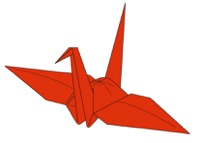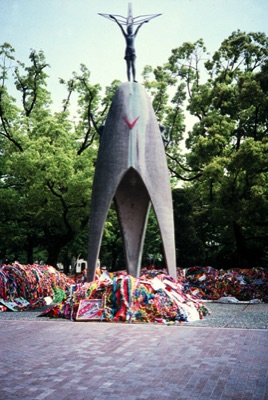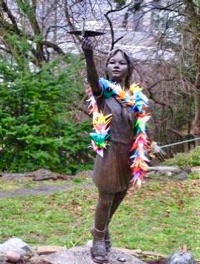I learned the story
After I found out about her diagnosis, my sister-in-law, Kayoko was in town and strongly suggested I fold 1000 origami cranes for Betsy as a gesture of good wishes for longevity and hope.
Folding 1000 cranes is a Japanese custom that has been practiced for many years when someone is ill or as an expresion of good wishes. They can also be folded for a wedding, where 1001 cranes would be given.
The crane is a bird that is known to live a long time, even 1000 years according to Japanese legend and has become the symbol of this in their culture.
Some of you may have read the story of “Sadako” - a Japanese child afflicted with radiation-induced cancer following the bombing of Hiroshima. She died during her attempt to fold 1000 cranes for herself. Following her death, friends in Japan continued to fold the 1000 cranes in honor of her. Today, children all over the world continue to fold cranes as a symbol of peace and send them to Hiroshima, the site of a Sadako's memorial. (See picture and article below)
Sadako Sasaki a 12 year-old girl who died from bomb-induced radiation poisoning in October, 1955 (as described in Wikipedia aricle on the Hiroshima Peace Memorial Park). Sasaki believed that if she folded 1,000 paper cranes, she would be cured. She wasn’t.
This Children's Peace Monument is a statue dediated to the memory of the children who died as a result of the bombing. The statue is of a girl with outstretched arms, with a folded paper crane rising above her. To this day, people (mostly children) from around the world fold cranes and send them to Hiroshima where they are placed near the statue. The statue has a continuously replenished collection of folded cranes nearby.
Peace Park
Seattle, Washington
Click this picture to read details
The official website is in Japanese.
Click her picture to visit the Peace Park website

Children's Peace Monument Hiroshima Japan




